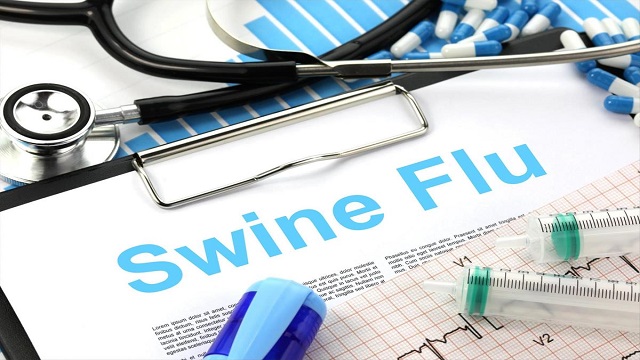Swine Flu was a major pandemic in the year 2009-10 that killed around 20,000 people (lab-confirmed deaths). The disease has symptoms rather similar to influenza. However, the chance of it worsening over time is much higher, thus increasing the over-all mortality rate. This creates panic amongst people. This disease has seen an insurgence in the country this year with over 1800 recorded cases by August in Maharashtra alone. In contrast, the total number of H1N1 deaths throughout the country in 2021 was 12.
H1N1 first broke out in April 2009, but subsided relatively quickly- by August 2010, unlike COVID 19. Since then, it has occurred as a seasonal influenza, peaking during winter and monsoon.
One of the possible reasons for H1N1 dying out as quickly as it did might be the fact that it is not as transmissible as COVID. Adding to the fact that people developed herd immunity to the disease was key to the disease becoming much more manageable, much faster.
Even though a vaccine has been developed for Swine Flu, the uptake in India has not been great.
What is Swine Flu?
Swine Flu is named so because it is a respiratory infection caused by an influenza strain that started in pigs.
Swine flu was first recognized in the 1919 pandemic and still circulates as a seasonal flu virus. Swine flu is caused by the H1N1 virus strain, which started in pigs.
What are the main symptoms of Swine Flu?
The symptoms of H1N1 virus are more or less similar to the symptoms of seasonal flu. These include:
- Fever
- Cough
- Sore Throat
- Runny or Stuffy Nose
- Body Ache
- Headache
- Chill
- Fatigue
- Diarrhea
- Vomiting
There are various symptoms that might show up in more severe cases.
The symptoms that can be seen in adults in severe cases include:
- Shortness of breath
- Pain in chest or abdomen
- Dizziness
- Confusion
- Persistent vomiting
The symptoms of severe cases in kids can include:
- Trouble breathing
- Bluish skin color
- Dehydration
- Lethargy
- Irritability
- Fever with rash
- Symptoms getting better then returning with more severity
It should be kept in mind that with timely treatment, Swine Flu is an extremely treatable disease. Sometimes complications do crop up, but it is mostly when the disease affects somebody with an underlying issue like hypertension, diabetes, pregnancy, advanced age related issues, etc.
How to prevent Swine Flu?
Since the basic symptoms of Swine Flu are similar to that of common cold or influenza, all the basic hygiene practices should always be taken care of.
Prevention tips for Swine Flu include:
- Washing hands regularly with soap and water
- Avoid touching eyes, nose, or mouth
- Covering nose and mouth while coughing or sneezing
How to manage and treat Swine Flu?
Patients who have tested positive for Swine Flu are generally treated with anti-viral medication, along with medicines for symptomatic treatments, like anti-pyretic, analgesics, cough syrups, etc. Apart from that, the treatment depends on the severity of the symptoms.
Tips for managing Swine Flu:
- Consumption of abundant liquids to help with dehydration
- Getting abundant rest and sleep to give a boost to the immune system
- Getting pain-relief medication with the advice from the doctor




 Ms Kalinga
Ms Kalinga